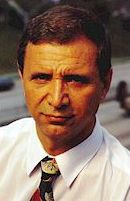For nearly four years, Dr. Behnam Kamali, professor of electrical and computer engineering, has been conducting research on a technology called Aeronautical Mobile Airport Communications System, or AeroMACS.
This aeronautical communication standard, which facilitates communication between air traffic control towers, aircraft on the ground and all other stationary and mobile units on an airport surface, could result in better airport management, fewer delays, lower operations costs and increased safety.
Since the 1940s, the communication technology used to relay messages from pilots to the control tower and vice versa has been analog commercial AM. In the past couple of decades, the capacity of this technology rapidly reached saturation and could not meet the ever-increasing demands for radio channels in major U.S. and European airports.
AeroMACS, a network-centric digital communication technology based on cellular architecture, provides coverage for the airport surface using base stations and relays. Dr. Kamali's work, specifically, relates to how these relays, or electronic repeaters, could retransmit wireless signals without requiring additional base stations to be installed on an airport surface.
AeroMACS would also allow for better security schemes through encryption and application of security protocols that are available in AeroMACS mother technology, called WiMAX.
The question that remains is how reliable is this digital technology versus its analog counterpart. The primary reason for the selection and survival of analog AM for over seven decades is the fact that it was a proven technology. AeroMACS is still by and large untested.
Cleveland Hopkins International Airport and NASA Glenn Research Center in Cleveland have been used as the “test base” for AeroMACS. However, AeroMACS is scheduled to be deployed on a limited basis at nine airports across the U.S. in 2014, including San Francisco International Airport, Andrews Air Force Base, Ted Stevens Anchorage International Airport and Louis Armstrong New Orleans International Airport. If these tests bear positive results, Dr. Kamali believes AeroMACS could be deployed all over the world by 2020.
“Once they see the results, people will jump all over it,” he said.
Dr. Kamali's interest in AeroMACS dates back to 2005 when he was first exposed to it at the NASA Glenn Research Center. Since then, he has written at least eight research reports and five academic papers on the technology. He is currently one of about a dozen experts involved in research and development of this technology at the global level, and one of only two U.S. academics.










